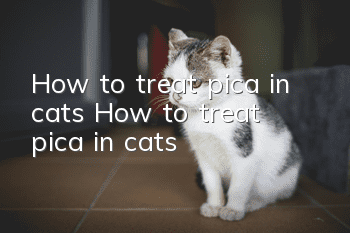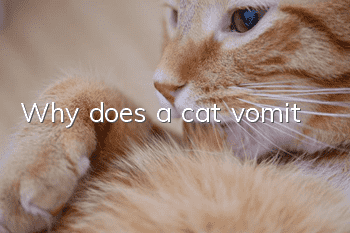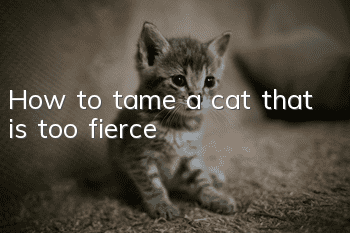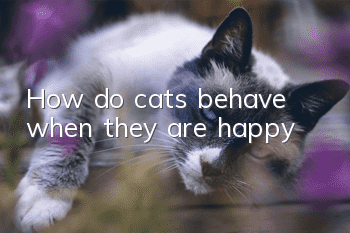How to treat pica in cats? How to treat pica in cats?

How to treat cat pica? The behavior of cat pica refers to the cat’s special habit of sucking certain things that should not be eaten. Most of the cats’ sucking objects are woolen fabrics, textiles, owners or plant.
Pica is a pathological manifestation of cats swallowing or licking foreign objects other than food. Pathologically, it is also a common nutritional and metabolic disease. This abnormal and pathological behavior means that cats have a special hobby for certain things that should not be sucked, just like some people like to bite their nails or suck their fingers, and most of the cats' sucking objects are woolen fabrics. , textile, host or plant.
Cats with pica often manifest themselves in swallowing wood chips, stones, rags, sand, fur, grass, feces and other foreign objects. Depending on the characteristics of the foreign objects swallowed, whether they are retained in the digestive tract, and whether they are retained in the digestive tract, there will be sharp edges at the retained parts. Foreign bodies that damage the oral cavity can cause salivation and oral bleeding; in some cases, foreign bodies can cause obstruction or perforation in the esophagus, stomach, and intestines.
It is not uncommon for animals to lick their fur and form hairballs in their stomachs. When there are foreign bodies in the digestive tract, cats often have symptoms such as anorexia, hunger strike, and vomiting. Then we must take certain precautions against this.
How to treat pica in cats:
Most of the sucking behavior occurs in cats that are highly dependent. They retain the dependence of their childhood (normal cats are quite independent), so psychological treatment for this kind of over-dependence will be helpful. In order to improve the abnormal sucking behavior, the cat should increase the excitement of games, increase activities at home, and give some new things to stimulate its curiosity. If possible, let it have more contact with the outside world and take it out for more walks.
Of course, the most important thing is to strengthen feeding and management, adjust the nutritional structure of food, and supplement trace elements and multivitamins in an appropriate amount. For example, it is ideal to add multivitamin tablets to the cat’s food (21 Jinvita), Calcium tablets, cod liver oil, etc. Regular deworming is also required. Adding cellulose substances to food, such as rice bran and toilet paper, can also improve the habit of eating plants. Regarding the behavior of cats sucking textiles, you can spray some strong-smelling barrier agents on these textiles, such as eucalyptus oil, peppermint oil, etc. You can also place some mechanisms under the clothes to deter cats from approaching.
The principle of prevention and treatment is to take laxatives or deep enema to eliminate foreign bodies in the digestive tract. Pets with gastrointestinal diseases should be treated with primary diseases caused by intestinal parasites. It is best to use levamisole hydrochloride, 10 mg per kilogram of body weight, orally, or ivermectin, 0.2 mg per kilogram of body weight, intramuscular injection. Repeat the medication once after 1 week.
- What are the symptoms of cat constipation? And how to relieve it?
- What precautions should be taken when breeding Chinchilla?
- What causes scab-like lumps on cat's paws?
- Norwegian Forest Cat Characteristics and Breeding Tips
- How many grams of taurine should cats take every day? What happens if you overdose?
- How to raise a savanna cat? Precautions for raising a serval cat
- Signs of sexual maturity in male cats
- Why do cats get diabetes?
- Will the cat recognize its owner when it is found?
- What to do if your cat’s stool is dry



